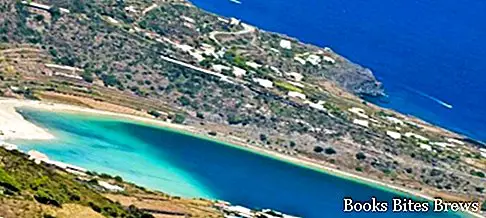What to see in Pantelleria, itinerary including the main places of interest, including Balata dei Turchi, Laghetto delle Ondine and Specchio di Venere.
Tourist information
Located in the Mediterranean Sea in the center of the Sicilian Channel, at a distance of about 70 km from the north-eastern coast of Tunisia, Pantelleria is the largest of the islands located near the Sicilian coasts.
Some believe that it is the Ogigia indicated by Homer in the Odyssey, a poem of Greek mythology, as the place where Ulysses was bewitched by the tricks of the sorceress Circe.
The island of Pantelleria is of volcanic origin and its territory culminates in the center with the Montagna Grande, an extinct volcanic crater whose altitude is 836 meters above sea level.
Today there are some secondary phenomena of the ancient volcanic activity such as thermal waters, the emanation of sulphurous vapors inside natural caves, and favare, jets of steam that come out from the cracks of the lava rocks.
The first human settlements of Pantelleria are linked to the obsidian resource, a highly coveted volcanic glass throughout the most ancient prehistory.
The most significant testimony is represented by the Sesi, a people shrouded in mystery who built cyclopean walls and stone tombs, sepulchral monuments dating back to the ancient Bronze Age, found on the north-western coast, in the archaeological area of Mursia, 3 km from the center of Pantelleria.
The soil of the island is very fertile, despite the little water available, and is covered with rich vegetation.
The land, made cultivable through terraces defined by dry stone walls, is part of a suggestive agricultural landscape made up of vineyards, olive trees, caper plants and vegetables.
The vines, which produce the zibibbo grape from which the famous Passito di Pantelleria derives, and the olive trees, are pruned very low, so as to reduce their exposure to the winds that blow continuously on the island.
Characteristic are the Pantelleria gardens, surrounded by high circular fences made of lava stone, which house citrus plants inside, which are thus protected from the wind, preventing the night dew from drying out, so as to remain on the leaves for all day.
Recommended readings- Mazara del Vallo (Sicily): what to see
- Trapani (Sicily): what to see
- Randazzo (Sicily): what to see
- Milazzo (Sicily): what to see
- Sicily: Sunday day trips
Within this landscape, the Dammusi are harmoniously inserted, typical Pantelleria dwellings inherited from the Arab occupation.
The rural construction, with very thick stone walls, has a domed roof whose structure allows rainwater to be channeled towards the precious cistern, located near the dammuso.
What see
With the exception of Scauri, there are no beaches, but only uncomfortable access to the sea which does not make it the ideal place for a relaxing beach holiday.
Despite this, it is possible to live a different holiday experience in Pantelleria, with the intense smell of the sea and the rich history that mix with the many phenomena of secondary volcanism, including caldarelle, molfette and favare, which flow from the rocks to a temperature of about one hundred degrees.
In the buvires, characterized by brackish water, it is possible to dive in peace, experiencing unrepeatable sensations elsewhere.
Lo Specchio di Venere is a natural lake that occupies the bottom of a depression of calderic origin, located in the central north part of Pantelleria.
The thermal springs are concentrated on the southern part of the lake, where it is possible to dive and spread the mud on the bottom of the lake, on the opposite side there is a beach where you can swim and sunbathe.
Punta dell’arco dell'elefante, which is located on the east coast of the island, constitutes a magnificent rock formation, whose shape resembles an elephant, intent on drinking the sea water with its trunk.
The Benikula Cave, located inland in Benikulà, offers a panoramic view of the large plain of the Monastery.
The interior of the cave is a natural sauna where water vapor comes out at around 38 ° C.
Cala Gadir, between the third century BC and the third century AD, was the main landing place of the island, for this reason it proved to be the custodian of precious underwater archaeological finds.
This place is appreciated for the presence of thermal waters, collected in tanks located at sea level.
In a cove in Punta di Nica, from the rocks of the vertical wall, a thermal spring gushes out that makes the sea water warm at a depth of about one hundred and fifty centimeters.
The Laghetto delle Ondine is a basin of lava rock that the sea fills with water.
Balata dei Turchi is a very beautiful cove which constitutes one of the few descents to the sea of Pantelleria.
How to get
plane
In the north-west part of Pantelleria there is the airport of the island, where daily flights from Palermo and Trapani arrive throughout the year, while in summer there are also those operated by some companies with departures from Rome, Milan, Venice, Verona and Bologna.
By sea
The ship is the cheapest way to get to the island of Pantelleria.
You must get to Trapani and from there take the hydrofoil of the Siremar company, which makes daily connections.
For those in no hurry you can also take the ferry to Mazara del Vallo, but in this case it takes 2 hours of navigation.




